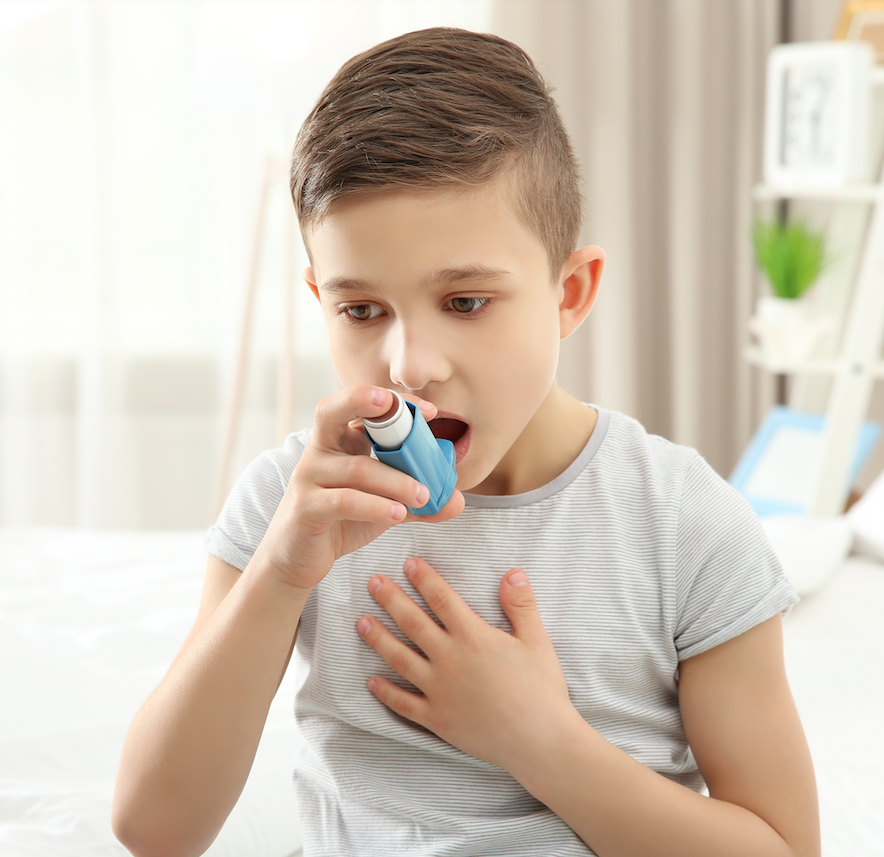Article
Laryngeal Control Therapy Leads to Asthma Medication Reduction in Pediatric Patients with PVFMD
Author(s):
Many patients with paradoxical vocal fold motion disorder are misdiagnosed, and instead believe they are dealing with asthma. But in many cases, their symptoms do not respond to therapies.
Brad deSilva, MD

Pediatric patients with paradoxical vocal fold motion disorder (PVFMD) decrease their usage of asthma medication when they participate in laryngeal control therapy (LCT), according to a new study.
The findings align with the findings of an earlier study examining the impact of LCT in adult patients with PVFMD.
PVFMD is a little-known disorder in which dyspnea, cough, and stridor are triggered by paradoxical movement of the vocal folds when a patient breathes in or out. It is usually caused by exercise, stress, or irritants like smoke or gastroesophageal reflux disease (GERD). It tends to first appear in a patient’s early teenage years, and is more common in males than females.
Corresponding author Brad deSilva, MD, of the Wexner Medical Center at Ohio State University, and colleagues noted that the condition can be difficult to distinguish from other similar conditions, and in particular can be difficult to distinguish from asthma. One problem is that many physicians frequently misdiagnose PVFMD as asthma; in other cases, patients have both conditions, but only receive a diagnosis of asthma.
“Many times, patients are thought to have asthma and given some form of inhaler prior to being evaluated and diagnosed with PVFMD,” deSilva told HCP Live. “They will have tried medications that simply don't help them.”
Once properly diagnosed, many patients with PVFMD respond to LCT, in which patients are taught breathing techniques and identify emotional, physical, and environmental contributing factors to the disorder.
“In our clinic, new patients are seen by the physician and speech language pathologist concurrently in order to facilitate their diagnosis and therapy care,” deSilva explained. “This model of care allows the patient to develop a rapport with the treating therapist right from the start.”
deSilva added that simply gaining an understanding of how vocal folds can create upper airway obstructions often helps patients feel better even before they begin their therapy.
deSilva and colleagues wanted to know whether the diagnosis of PVFMD and treatment with LCT might lead to lower usage of asthma medication and also what impact such changes might have on dyspnea.
The investigators recruited 26 patients between the ages of 11 and 17 who sought care at a single pediatric healthcare institution. Nearly three-quarters (19/26) of patients had previously been diagnosed with asthma before being diagnosed with PVFMD. All of the patients were using an inhaler before enrolling in the study, but only 46% said the inhaler provided any relief of acute dyspnea.
Of the 26 patients, 22 completed follow-up questionnaires, 7 participated in partial therapy, and the 14 patients completed the therapy. Five patients did not participate in therapy. Follow-up took the form of medication and dyspnea index (DI) questionnaires given at enrollment, at the first return visit for LCT, at 3 and 6 months, and at a longer-term follow-up interval, which varied depending on when the patient enrolled in the study.
deSilva and colleagues reported that those who completed full therapy (at least two sessions) had a significant reduction in asthma medication usage (P < .05) as did those whose only PVFMD trigger was exercise (P < .05). Scores on the DI decreased overall from 25.5 to 18.8 (P < .001).
“Diagnosis and treatment of pediatric PVFMD leads to a decline in asthma medication use at last follow-up in those patients who participate in at least two LCT sessions,” they concluded.
The investigators said their data suggested the biggest benefits were seen in patients with severe symptoms according to the DI, although they said it could also be due to the fact that 4 of the 5 patients in the study with severe symptoms completed the full therapy, a higher rate than the overall study population.
The authors cautioned that there are limitations to their research, including the small sample size. They said larger studies could help elucidate the benefits of PVFMD diagnosis and LCT, both in terms of patient experience and in terms of healthcare costs.
The article, “Reduced Asthma Medication Use after Treatment of Pediatric Paradoxical Vocal Fold Motion Disorder,” was published online in The Laryngoscope.





